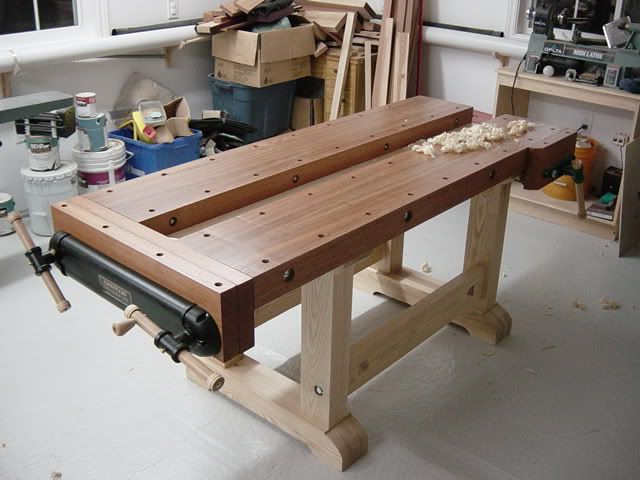
Originally Posted by
Robert Trotter
Andy,
Looking at your bench picture am I right in that you have no top stretchers in either direction. Just four legs with botom stretchers and the legs morticed into the top? So the stability is from the mortice into the top?
It's a bit hard to see clearly but am I right in that your legs and the front of your bench are in line?
If so, how do you find this?
And... is your bench made from pine? Has it got enough weight for hand planing?
I am in the process of thinking about my bench design and construction also. I am wondering if I need the top stretchers with a thick top. If there are no stretcher at the top will the table be stable against racking?
Robert
Originally Posted by Eric Sink




 Reply With Quote
Reply With Quote
 )
)



 pic of the Veritas twin screw vice
pic of the Veritas twin screw vice
